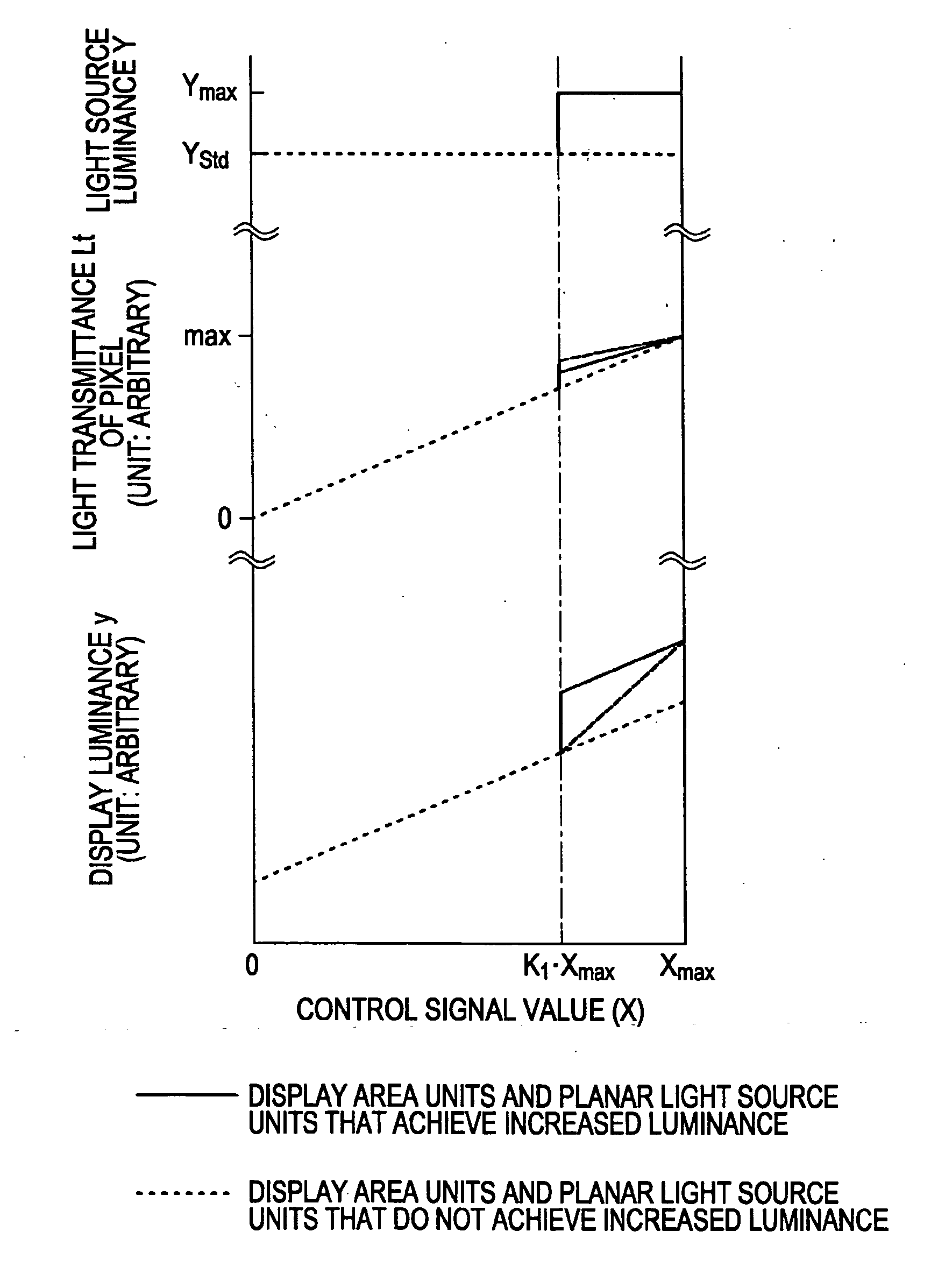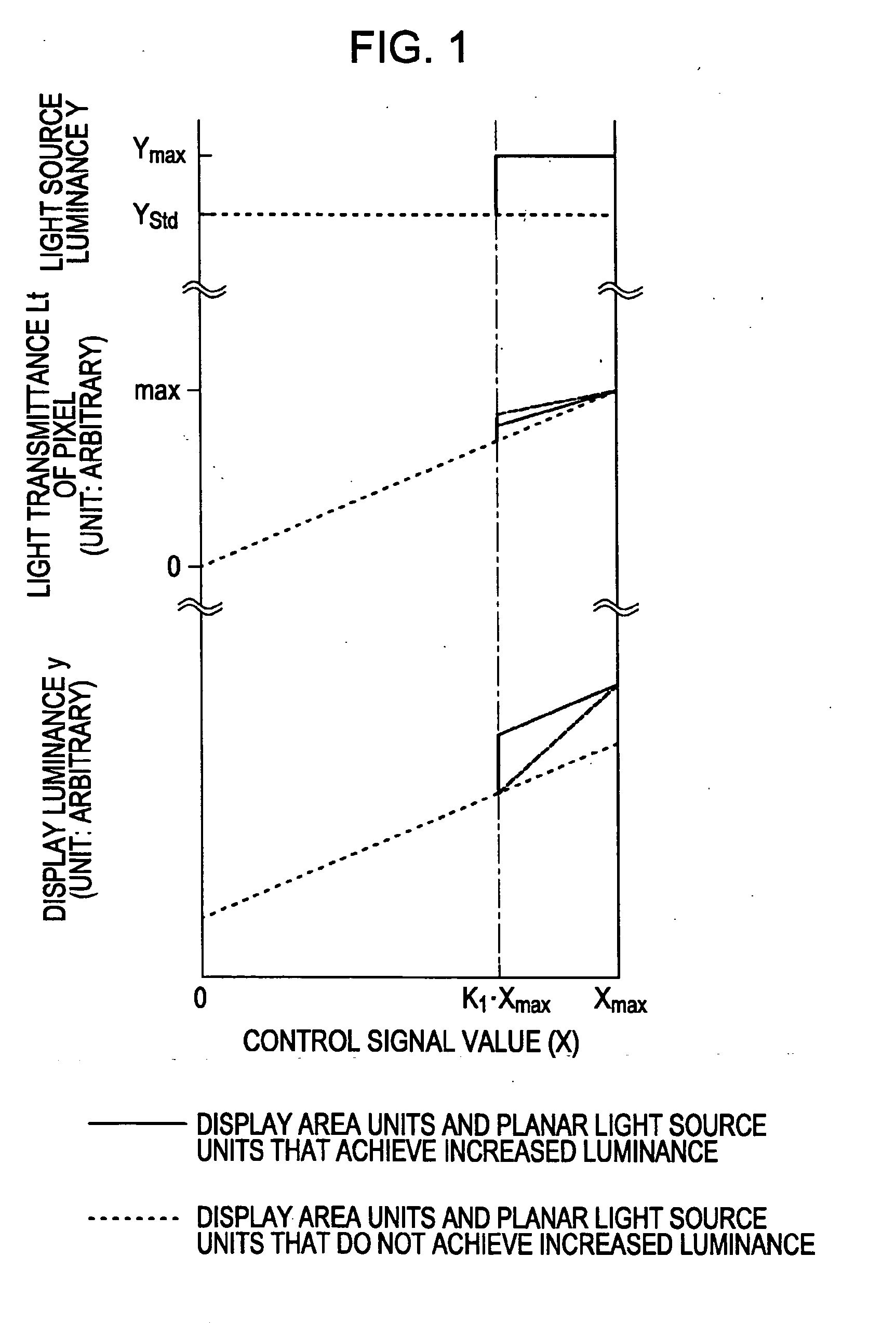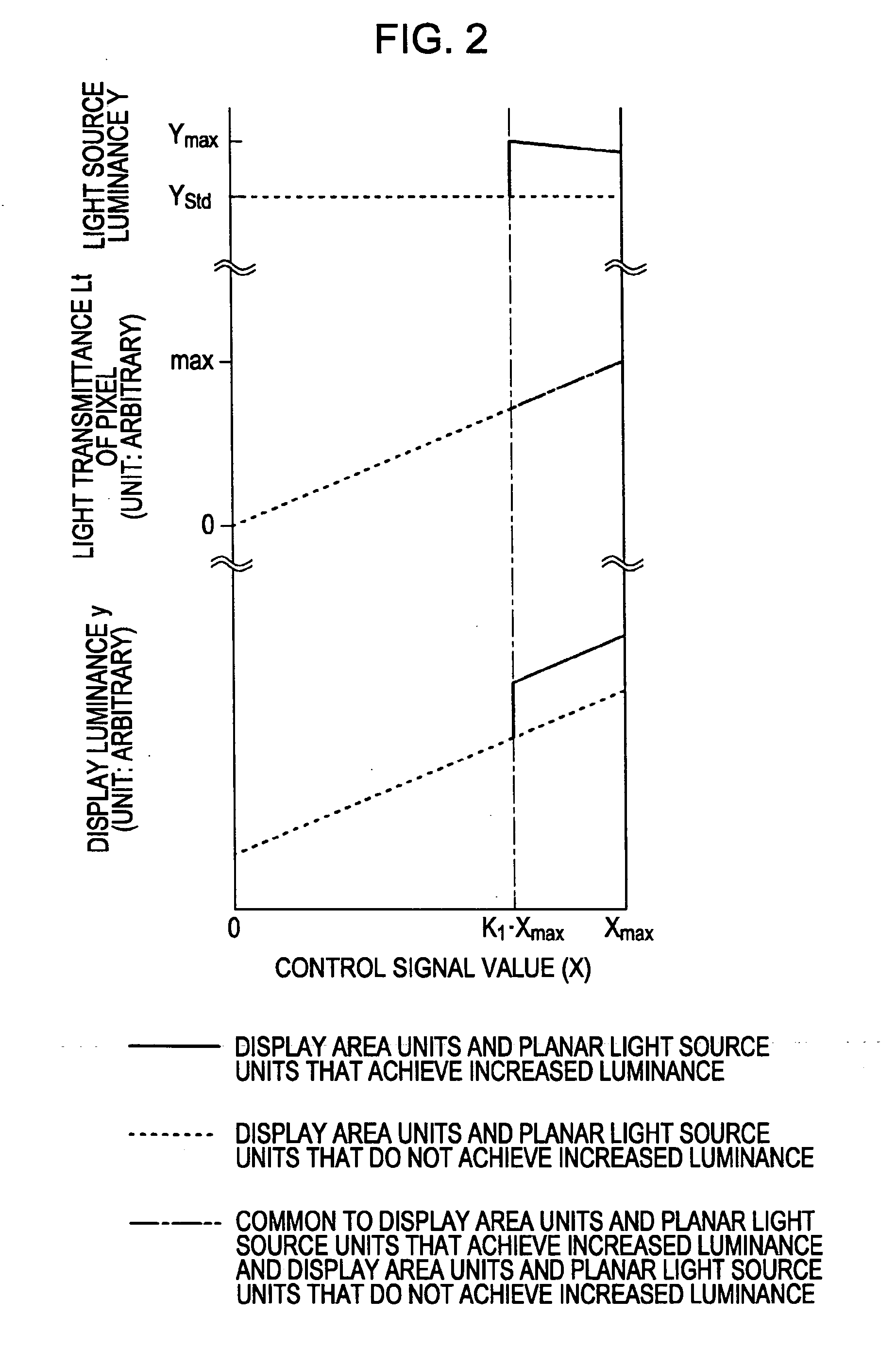Driving method for liquid crystal display device assembly
a liquid crystal display and assembly technology, applied in the direction of instruments, static indicating devices, etc., can solve the problems of increasing the luminance level of the full-black display portion, making the display state on the screen unnatural compared with other types of display devices, and no specific method of increasing the luminance level of the white display portion to a level higher than the luminance level of the other display portions, so as to achieve the effect of enhancing the contrast ratio and increasing the luminan
- Summary
- Abstract
- Description
- Claims
- Application Information
AI Technical Summary
Benefits of technology
Problems solved by technology
Method used
Image
Examples
first embodiment
[0117] In a first embodiment, a driving method for a liquid crystal display device assembly is described. Specific values of various parameters used in the first through ninth embodiments are defined as follows.
xmax=256
k0=0.125
k1=0.9375
k1·xmax=240
k0·xmax=32
k2=0.485
α0=1.00
α1=0.7
α2=0.1
[0118] Dmax=duty ratio that can obtain 714 cd / M2 in a display area unit in a color liquid crystal display device
[0119] D0=Dmax
[0120] D1=duty ratio that can obtain 500 cd / M2 in a display area unit in a color liquid crystal display device
[0121] D2=duty ratio that can obtain 71 cd / M2 in a display area unit in a color liquid crystal display device
[0122] The relationships of the value X of a control signal supplied to a pixel to the light source luminance Y and the light transmittance (aperture ratio) Lt and the display luminance y of sub-pixels in the first through ninth embodiments are schematically shown in FIGS. 1 through 9. In FIGS. 1 through 9, the solid lines indicate the behaviors of the...
second embodiment
[0140] In a second embodiment, which is a modification made to the first embodiment, the control mode 1B and the control mode 2A are employed. That is, in steps S220A and S220B similar to steps S120A and S120B in the first embodiment, control mode 1B is employed. The relationships of the control signal value X to the light source luminance Y and the light transmittance Lt and the display luminance y of sub-pixels in the second embodiment are schematically shown in FIG. 2. A description is now given, with reference to FIGS. 11A and 11B and 16, of a driving method for a liquid crystal display device assembly according to the second embodiment. FIGS. 11A and 11B illustrate the concept of the relationship among the light source luminance of the planar light source device 40, the light transmittance (aperture ratio), and the display luminance of pixels in the control mode 1B. FIG. 16 is a flowchart illustrating the driving method for the liquid crystal display device assembly.
[0141] In ...
third embodiment
[0147] In a third embodiment, which is also a modification made to the first embodiment, the control mode 1C and the control mode 2A are employed. That is, in steps S320A and S320B similar to steps S120A and S120B in the first embodiment, control mode 1C is employed. The relationships of the control signal value X to the light source luminance Y and the light transmittance Lt and the display luminance y of sub-pixels in the third embodiment are schematically shown in FIG. 3. A description is now given, with reference to FIGS. 12A and 12B and 17, of a driving method for a liquid crystal display device assembly according to the third embodiment. FIGS. 12A and 12B illustrate the concept of the relationship among the light source luminance of the planar light source device 40 of pixels, and the light transmittance (aperture ratio) and the display luminance y of pixels in the control mode 1C. FIG. 17 is a flowchart illustrating the driving method for the liquid crystal display device ass...
PUM
 Login to View More
Login to View More Abstract
Description
Claims
Application Information
 Login to View More
Login to View More - R&D
- Intellectual Property
- Life Sciences
- Materials
- Tech Scout
- Unparalleled Data Quality
- Higher Quality Content
- 60% Fewer Hallucinations
Browse by: Latest US Patents, China's latest patents, Technical Efficacy Thesaurus, Application Domain, Technology Topic, Popular Technical Reports.
© 2025 PatSnap. All rights reserved.Legal|Privacy policy|Modern Slavery Act Transparency Statement|Sitemap|About US| Contact US: help@patsnap.com



